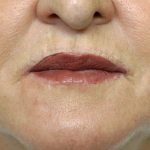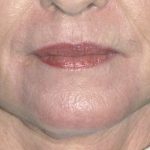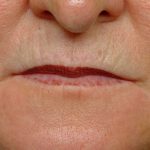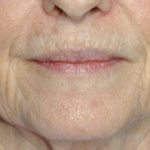- What happens to the mouth area with aging?
Like the rest of the face, aging affects the mouth by atrophy and sagging. This is manifest by lips that get thinner, the development of vertical lip wrinkles, corners of the mouth that turn down, and the appearance of marionette lines or folds. These changes collectively can give the mouth an invert U-shape or frowning look, making one look sad or even angry.
Rejuvenation of the mouth area is based on a variety of techniques including volume restoration (injectable fillers), lifting techniques (skin excision and rearrangement) and wrinkle reduction. (skin resurfacing)
2. How do you improve thinning lips?

Fat is another option for lip injection. It is generally done in the operating room when other plastic surgery procedures are being done. While it is the most natural lip filling material, it’s downside is that its survival is not predictable and some resorption does occur.
3. Are there any permanent lip augmentation procedures?
The appearance of a larger lip that is permanent is possible by changing the amount of visible vermilion. (pink part of the lip) This can be done by removing a strip of skin above (upper lip) or below (lower lip) where the vermilion meets the skin. The vermilion is then moved up or below to cover where the skin was removed. This produces a permanent enlargement of the lip…at the price of a fine line scar along the lip line. This procedure is known as a lip or vermilion advancement and can be used on either the upper or the lower lip.
The upper lip vermilion can also be lifted without removing skin directly above the lip line. By removing a strip of skin from beneath the nose, rather than lower at the lip line, the central part of the upper lip can be lifted to show more vermilion. Known as a lip lift, it can only be used on the upper lip (there is no nose on your chin!) and it does not lift the sides of the upper lip which are outside of the nose.
4. Can a facelift help get rid of my mouth frown?
Downturning of the corners of the mouth is a common perioral sign of aging. Although there are some people who have it naturally even when they are young. Contrary to what many people believe, it is not possible to lift the corner of the mouth (commissure) with a pull that comes from the side. (lateral) In addition, the point of pull is far away (by the ear) from the commissure so it would have little effect on it even if it was from the right direction.
5. What is the best way to get my corners of mouth lifted back up?

If the corner’s of the mouth is not turned down too severely, the use of injectable fillers can have a mild lifting effect.
6. What can improve the lines that run down from the corners of my mouth?
Vertical grooves or folds develop from the corners of the mouth down to the jawline because of the development of jowling. Loose and sagging skin falls forward toward the mouth and chin where it bunchs up against the more fixed skin of the chin. This creates a mound or fold which gives the appearance that there is a groove or line in front of it. This also makes any downturning of the corner of the mouth look worse.
Injectable fillers can certainly soften the appearance of the marionette lines, although they are only temporary. They can also be improved from the pull of a facelift and such tissue repositioning directly treats the cause of the problem.
In older patients who do not want a facelift or who have had one and have developed recurrent marionette lines due to inelastic skin, one can undergo a direct fold excision. A lenticular-shaped segment of skin is removed directly along the fold. While it does create a fine line scar, it is very effective at reducing its appearance.
7. How do you treat lip wrinkles?

Dr. Barry Eppley
Indianapolis, Indiana




